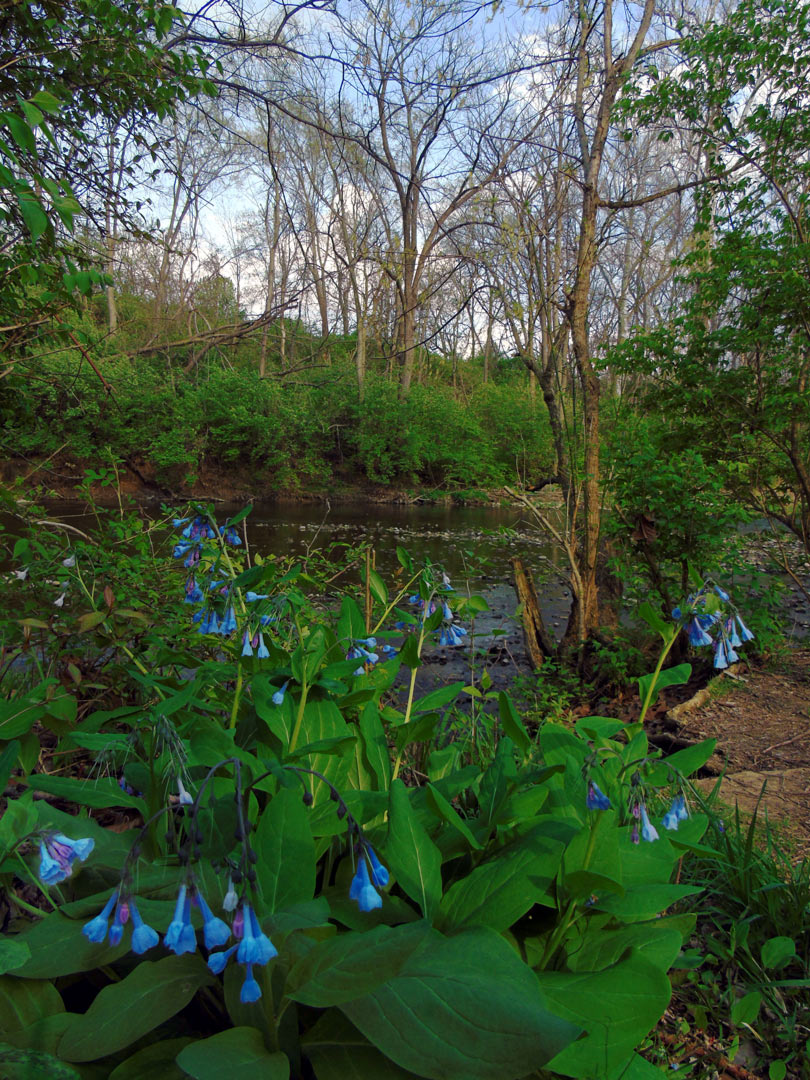
Spring is a special time in any temperate deciduous forest. The woods wake up after sleeping all winter, and a variety of life “springs” forth. In the swamp forest at Blacklick Woods, the vernal pools come alive.
These temporary wetlands fill with water from snowmelt and spring rains, and despite having been dry since the previous summer, suddenly teem with life. Amphibians are the most noticeable inhabitants. As vernal pools are devoid of fish predators, amphibians use these pools to breed.
Frogs
Frogs make themselves known in and around the pools with their loud calling. To attract females, a male channels air from his lungs into the air sac below his mouth, which inflates and resonates with sound.
One of the first frogs that can be heard is the spring peeper, which may call even when ice still covers some of the water. It’s one of a few frogs in Ohio that survives the winter by freezing solid—a trick made possible by special proteins and sugars in its body that act as natural antifreeze. The spring peeper is a little frog—it can sit comfortably on a dime—that makes a BIG sound.
Spring peepers
Peepers give a short, bird-like whistle, which when heard from four to eight inches away can reach a sound level of 110-120 decibels. To put that in perspective, 120 decibels is the sound level of a jet engine heard from 70 yards away, or the level at a loud rock concert. This makes the spring peeper one of the loudest vertebrates (backboned animals) on Earth for its size. Being this loud takes a lot of energy, and a male spring peeper’s vocal muscles can make up 15 percent of its body mass.
Here is a short video recording of a spring peeper calling in the buttonbush swamp at Blacklick Woods:
As their name suggests, spring peepers call throughout spring. Other frogs calling at Blacklick Woods right now include the western chorus frog and gray treefrog. The chorus frog’s call sounds like the noise produced by running your finger down the teeth of a comb. Listen for it interspersed with the noisy clamor of the peepers. The gray treefrog gives a loud, simple trill that lasts one to three seconds. While peepers and chorus frogs call from within vernal pools, gray treefrogs prefer to broadcast from branches above the water.
Nesting raptors
I love the name “raptors” for birds of prey. It serves to remind us that birds are not merely descended from dinosaurs—they are dinosaurs. Birds are in the class Aves, which is in the clade Theropoda, the dinosaur group that contained T. rex and Velociraptor. You can forget everything else you know about birds, because you now know the best thing about them.
Barred owls
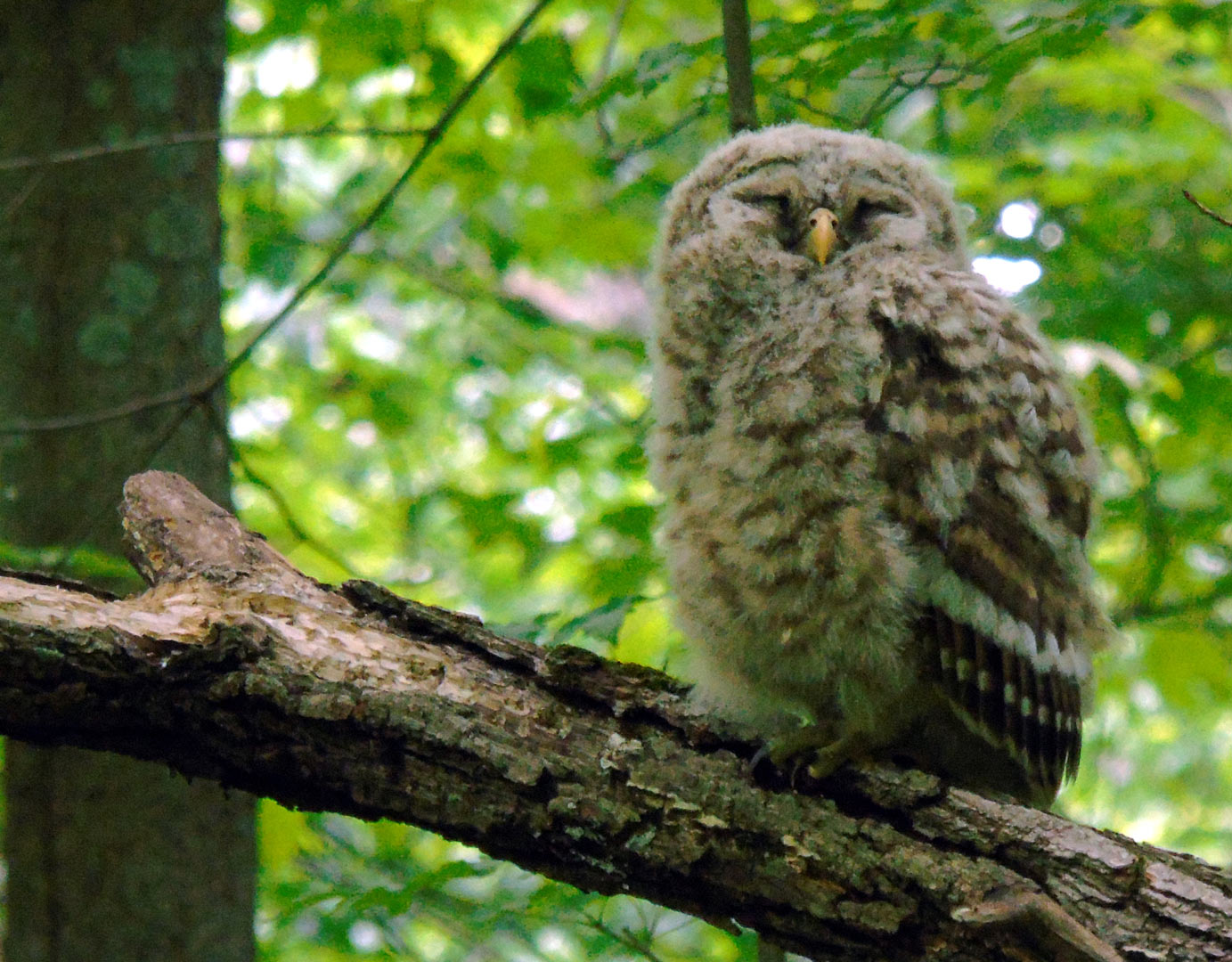
Blacklick Woods is well-known to birders for its resident barred owls. They can be seen throughout the year, usually roosting high up in beech trees on the west side of the Maple Loop. This species usually nests in tree cavities, such as those created by pileated woodpeckers, but will sometimes use abandoned stick nests built by other raptors, crows, or even squirrels. They typically lay their clutches of two or three eggs in early to mid-March, and the incubation period is about 30 days. That means the Blacklick owls’ eggs have likely already hatched. The owlets fledge after four or five weeks; look for them out of the nest starting in late May. In the summer, look for the adults hunting at Ashton Pond with their young nearby, even during the day.
I photographed this fledgling in the last week of May last year. It had probably just left the nest at four to 5-weeks old.
Red-shouldered hawks
In recent years, another raptor has begun nesting at Blacklick Woods—the red-shouldered hawk. Our hawks usually choose a tree in either the Ash Grove or Meadows Picnic Area for their nest. This year, it is in Meadows. The nest is made of sticks and built in a large fork of the chosen tree. Red-shouldered hawks typically lay three or four eggs, and the incubation period is about a month. The young leave the nest at around six weeks of age, but their parents will continue to feed them for about four and a half months. Small rodents are their primary prey, but they are also fond of amphibians and reptiles, especially small snakes.
Red-shouldered hawks return to the same nesting territory year after year. One individual occupied a territory in southern California for 16 years in a row. We can only hope our hawks stay as long. You might expect tensions to be high between them and the barred owls, since they hunt similar prey, but nope. In fact, these two species have been observed nesting as close as 157 feet apart without conflict.
Wildflowers
The most obvious change to a temperate deciduous forest in spring is all the new plant growth. The soil warms up, and for a few short weeks there are no leaves on the trees to block sunlight from reaching the forest floor. Thus, we get spring wildflowers. Here are a few flowers that are currently in bloom at Blacklick Woods:
Dutchman’s breeches
This is one of my favorites. The name is funny and apt, with the flowers resembling tiny white breeches hung on a line, and these breeches are fit for a queen—a queen bumblebee, that is. Dutchman’s breeches flowers around the same time that queen bumblebees emerge from overwintering. Only the queen has the size and strength to pry open the petals and a long enough tongue to reach the nectar inside. After this royal pollination, the seeds develop, and they are dispersed by another, related group of insects: ants. Each seed has a protein-rich, fleshy attachment that ants find irresistible. They carry the seeds back to their nest, remove the tasty parts and feed them to their larvae, then take the seeds to their garbage dump. Here, in this underground chamber rich in nutrients from waste and dead bodies, the seeds germinate.
Large-flowered trillium
Of course we have Ohio’s state wildflower, the large-flowered trillium. Drooping and sessile trillium can also be found in the park. Large-flowered trillium, like other trillia, is dispersed by ants, but it is also dispersed by a much larger animal—the white-tailed deer. Deer love to eat the flowers, and they spread the seeds via defecation, sometimes half a mile or more away from the source.
Yellow trout lily
The brown-speckled leaves of yellow trout lily allegedly resemble the coloring of brook trout. This flower forms huge colonies, some of which may be up to 300 years old. For the first four to seven years of its life, it grows only one speckled leaf instead of two, and does not flower. Less than one percent of the plants in a colony will flower each year. This colony is at Ashton Pond.
Trout lily, too, is dispersed by ants. Next time you go to step on an ant, think about all the lovely flowers they spread through the forest.
Virginia bluebells
I’ll end with this one: Virginia bluebells. Like trout lily, it is colonial. It likes semi-shaded floodplain areas along rivers and streams. Sometimes ruby-throated hummingbirds visit the flowers. This patch is growing along Blacklick Creek, near the 2-mile marker on the Multipurpose Trail.
All of these flowers are spring ephemerals, which means they bloom for only a short time in the spring. By mid-May, expanding tree canopy leaves will block most of the sunlight reaching the forest floor, taking the flowers with them, so come out to see them while you still can. While you’re here, stop by Meadows Picnic Area to see how the young red-shouldered hawks are doing. Keep your ears open for chorusing spring peepers and the iconic “Who cooks for you?” call of a barred owl. And don’t forget to visit the nature center for some excellent wildlife-viewing there, too.
CAMERON SVOBODA
Blacklick Woods Nature Center Attendant
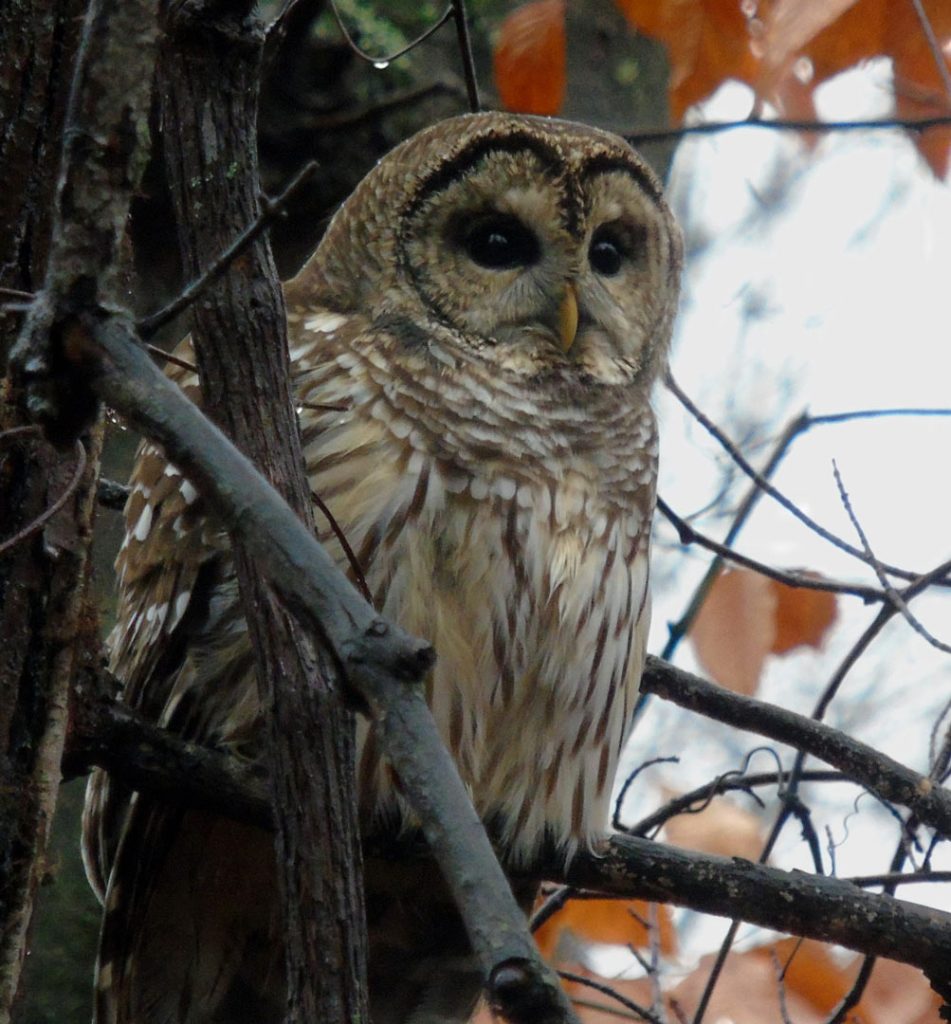
A barred owl at Blacklick Woods. (Cameron Svoboda)
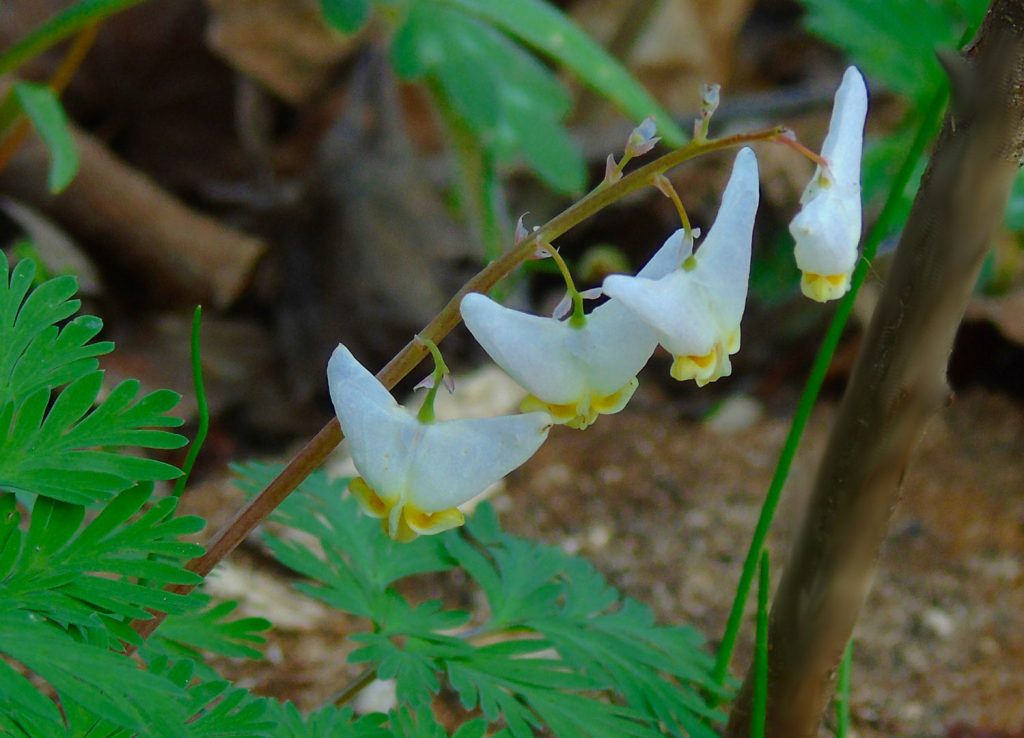
Dutchman's breeches in the woods at Blacklick Woods Metro Park. (Cameron Svoboda)
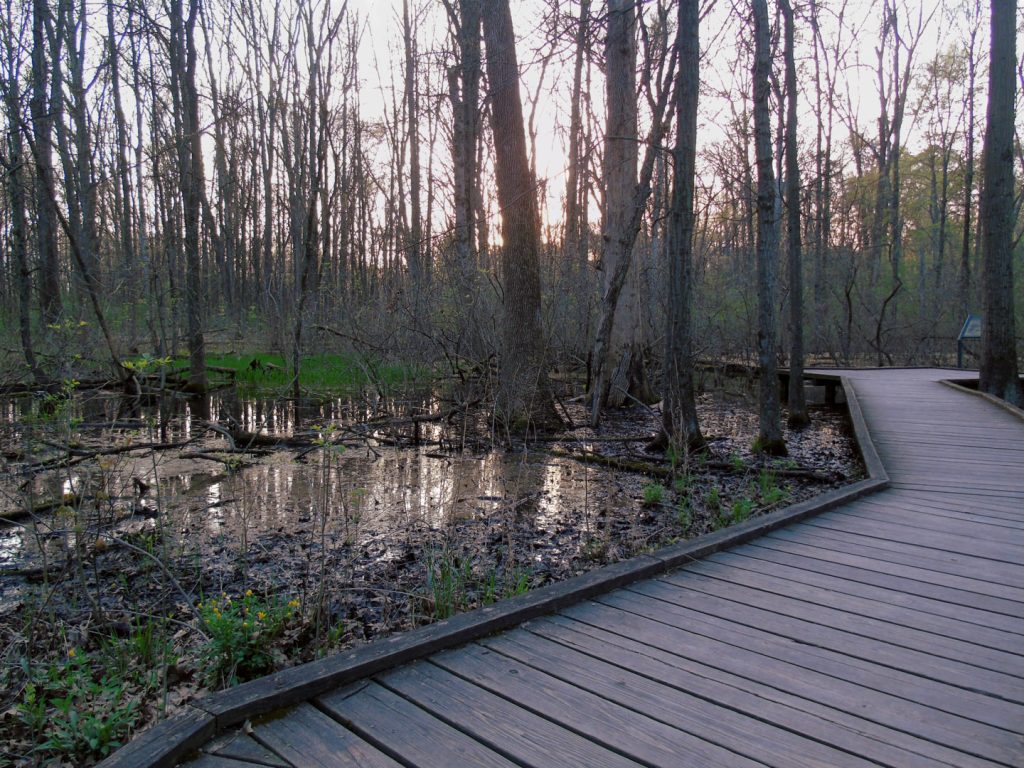
A boardwalk through the bottonbush swamp at Blacklick Woods is a great spot for educational programs about the swamp and its use as breeding grounds by amphibians. (Cameron Svoboda)
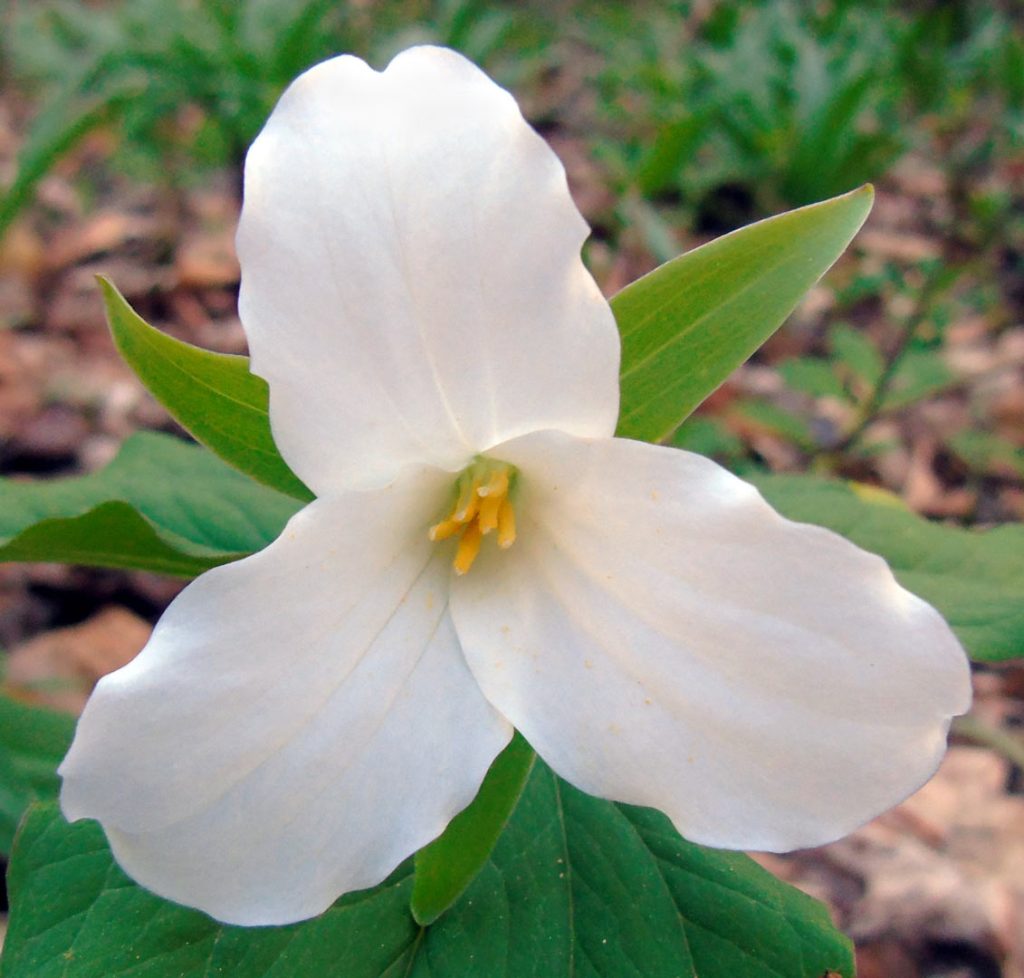
Large-flowered trillium in the woods at Blacklick Woods. (Cameron Svoboda)
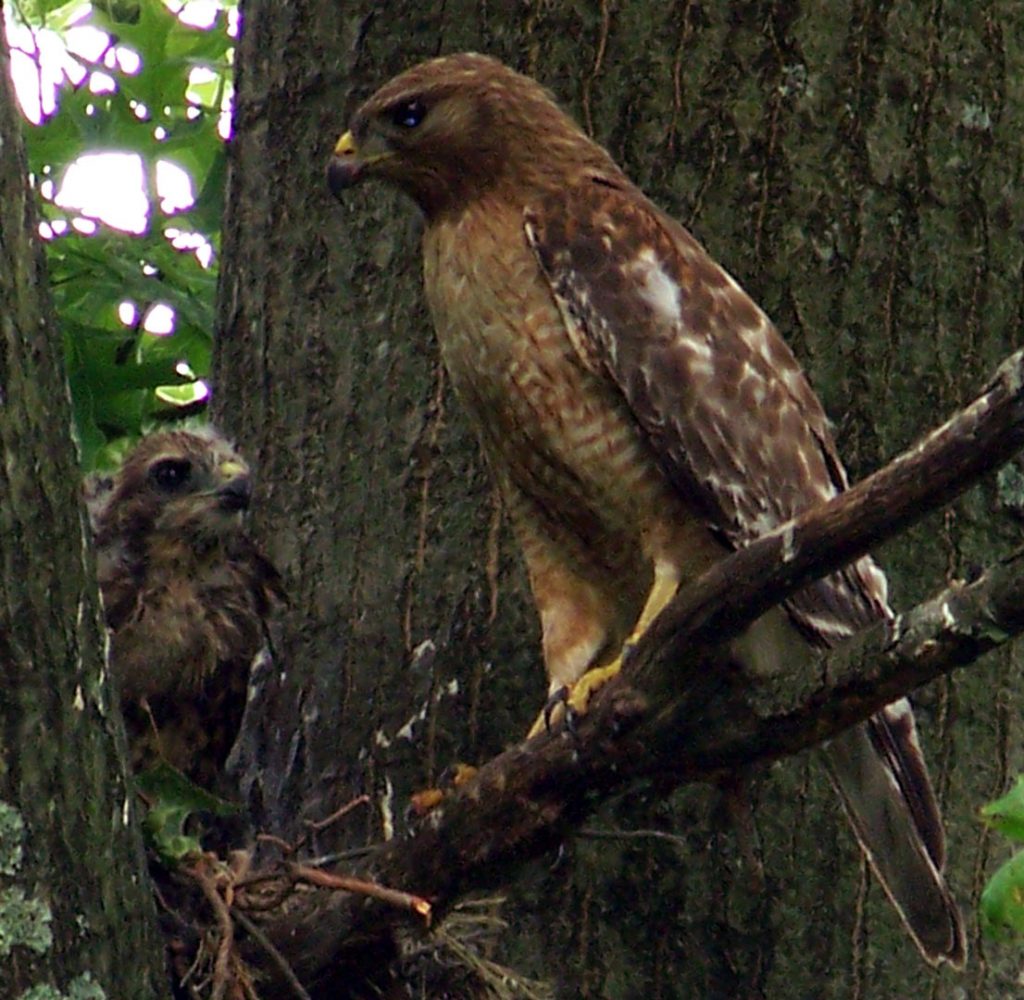
A red-shouldered hawk and nestling at Blacklick Woods Metro Park. (Cameron Svoboda)
